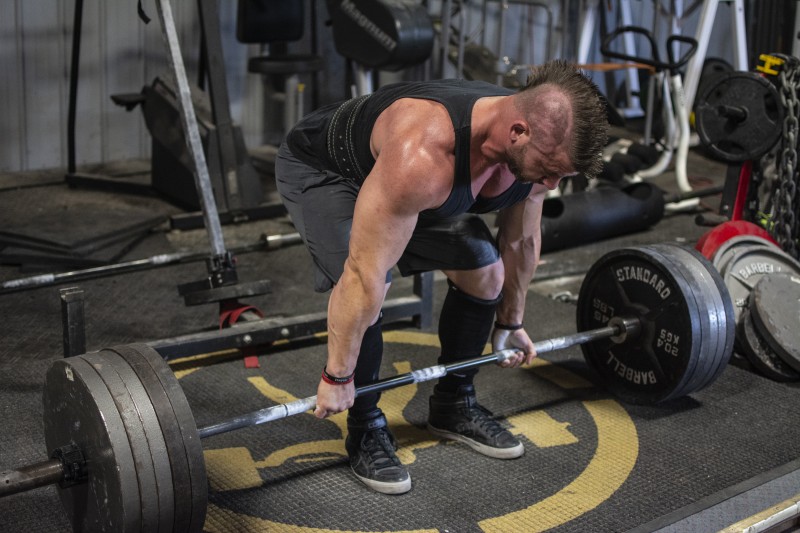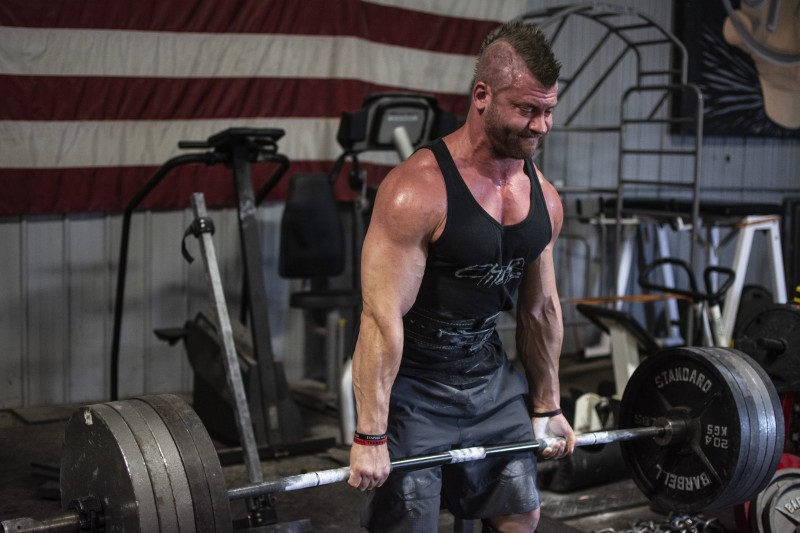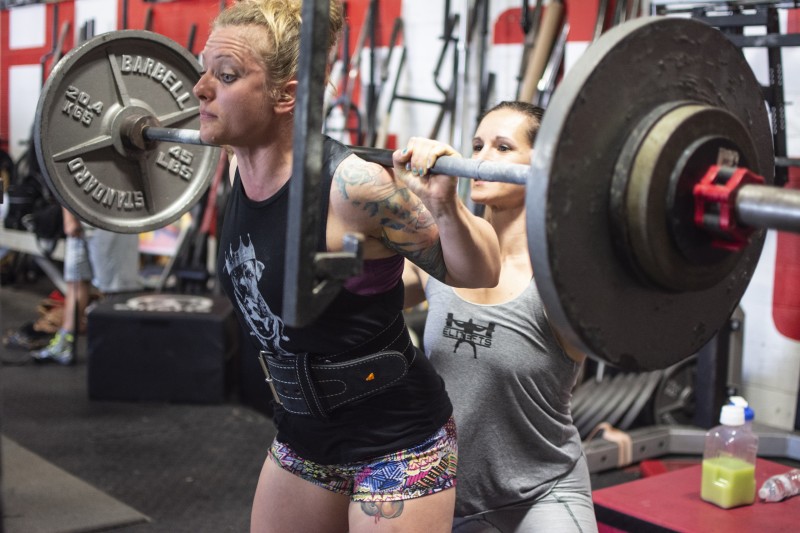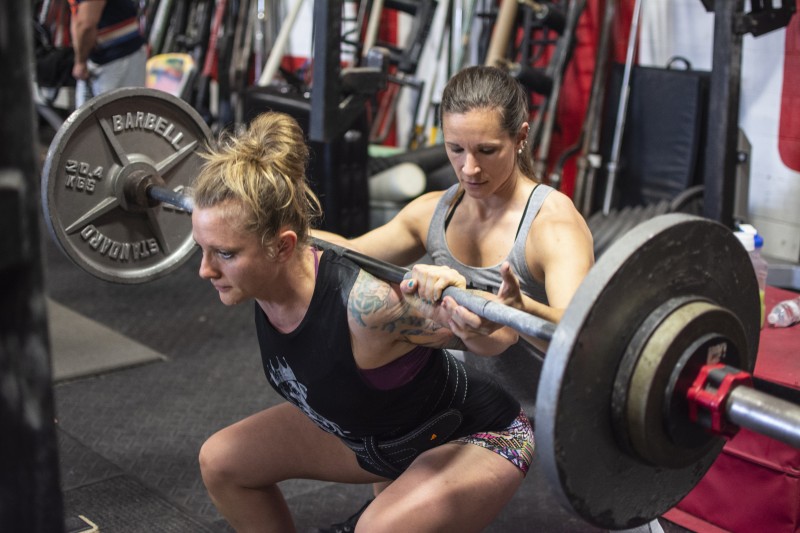
It’s 8 a.m. on a Monday. You grab your protein shake and coffee. You and 100 other students are sitting down, crammed into a lecture hall like sardines for Intro to Physics. You studied your ass off. You memorized equations. You got straight A’s because if you were like me you were headed to medical school, not a collegiate weight room.
I forgot much of what I learned in my intro classes by the time I got to my first internship. Sure, I could spew out formulas and argue the importance of the force-velocity curve but I didn’t truly understand its application when it came to developing athletes. I never took a Physics for Performance Class.
RECENT: What It Means to "Pass On"
My goal with this article is to break down important concepts in physics you should know as a coach and their application to coaching and programming. Many new coaches and even ones who have skin in the game don’t truly understand physics and its importance. Hopefully, after reading this, you will view sports slightly different.
Performance enhancement is both a science and an art. The sciences are physics, biology, biomechanics, kinesiology, kinetics, kinematics, etc. The art is applying all of those into your programming and knowing how to coach it.

I have found if you truly understand the science and how to apply it, you’ll have a better understanding of sports, and most of all, performance enhancement. You owe it to your athletes to understand the fundamentals. So let’s get started.
Mass and Acceleration
Mass is the amount of substance (also known as matter) an object possesses. It is also a measurement of an object’s resistance to acceleration when force is applied.
Acceleration is the rate at which an object changes its velocity.
- Equation for acceleration: Acceleration (a) = the change in velocity (Δ v) / the change in time (Δ t)
- Abbreviated equation: a = Δ v / Δ t
Why are we talking about mass and acceleration?
The root of everything we do in and out of the weight room is to increase force production, the rate at which we produce force, and the ability to repeat this ability.
Force
Force is any interaction that, when unopposed, will change motion. When anything moves, there is force involved. Force must be applied in order to move. Without force, there can be no change in motion. Therefore any change in motion requires the application of force. Within the body, force comes from muscular contraction.
- Equation for force: Force (F) = mass (m) x acceleration (a)
- Abbreviated equation: F = ma
The acceleration of an object is proportional to the total force applied to it and will be inversely proportional to the mass of the object. This means there is a direct relationship between force and acceleration when the mass is constant, which it is in sports, as our athletes’ mass doesn’t change. The only time mass will change is in the weight room with the use of accommodating resistance.

Discussion
If an athlete can apply force effectively and efficiently, they will have an enhanced ability to accelerate and change direction. An athlete’s ability to accelerate, change direction, or reaccelerate will be limited by how much force they can rapidly apply (impulse). The mass of a moving object — in this case, our athletes — doesn’t change. Therefore to increase force production we need to increase acceleration. This is why our athletes’ intent and effort should be to move as fast as possible. Always.
LISTEN: Table Talk Podcast Clip — Trying to Bulk to 400 Pounds
Think of any movement we do in the weight room. Would your athletes produce more force if they moved slower or faster? Well, according to what we’ve discussed so far, the greater we can accelerate, the greater the force output.
Velocity
Velocity is the rate at which an object changes position or the displacement of an object over an amount of time. Velocity is a vector quantity, meaning it’s described by both magnitude and direction, and in this case, speed and direction.
- Equation for Velocity: Velocity (v) = displacement (s) / change in time (Δ t)
- Abbreviated equation: v = s/Δ t
If you want to increase an athlete’s velocity, you either increase the time over which force is applied or the amount of force produced in a given time. When it comes to sports, we want to increase the amount of force produced in the least amount of time (impulse).
Displacement and distance are different. Displacement is a vector quantity. It’s your overall change in position — simply how far between where you started and finished. If you start and finish in the same spot, there’s been no displacement. Distance, on the other hand, is a scalar quantity and tells us how much ground has been covered.
Aren’t speed and velocity the same thing?
No. Speed is a scalar quantity, meaning it’s only described by a magnitude. Speed has no direction; it simply tells us how fast something is going. Since velocity tells us about speed and direction, there are three ways for us to accelerate: changing speed, changing direction, or changing both. If you’re not changing your speed or direction, then you’re not accelerating.

Impulse and Momentum
I’ve mentioned impulse a few times but now let’s discuss it.
Not many remember this from their lecture days, but it’s an extremely important concept to grasp when it comes to sports and performance. While movement is dependent on the force being applied, what is even more important is the time in which force is applied. This is impulse.
Sports are physics in motion, and changing velocities is what most sports are based on. The athlete who can move fast and change velocities quickly will have an advantage over the rest and will be more likely to have success than ones who can’t. Impulse is essentially responsible for the change in velocity.
- Equation for Impulse: Impulse (J) = force (F) x change in time (Δ t)
- Abbreviated equation: J = F(Δ t)
How can we produce as much force in the least amount of time? This is the underlying principle in most training programs for performance.
RELATED: Top-3 Cardio Options for the Powerlifter, Strongman, Bodybuilder, and Athlete
Why did you mention momentum and impulse together?
Momentum is mass in motion. All objects have mass, and if an object is moving, it has momentum.
- Equation for Momentum: Momentum (p) = mass (m) x velocity (v)
- Abbreviated equation: p = mv
The amount of momentum depends on how much mass an object has and how fast it’s moving. The more momentum something has, the harder it is to stop. In order to stop it, we need to apply a great amount of force against its motion. These are Newton’s first two laws. Objects like to stay doing what they are doing, and if we want to move them, we need to apply a big enough force — or we need to create an impulse big enough to alter its course/change its momentum. In other words: the impulse athlete experiences or produces = change in the athlete’s momentum.

Discussion
As velocities increase during a movement, the time to produce force decreases. Our goal is to get our athletes to produce the most amount of force in the shortest amount of time. This is rate of force development (RFD) and increasing it should be the goal of just about every training program.
Which leads us to power.
Power
Power is the rate at which work is done. Work is force, which causes displacement.
- The equation for work: Work (W) = force (F) x the change in displacement (Δ s)
- Abbreviated equation: W = F(Δ s)
- The equation for power: Power (P) = work (W) / time (t) OR Power (P) = force (F) x the change in displacement (Δ s) / time (t)
- Abbreviated equations: P = w/t or P = F(Δ s/t)
Remember the velocity equation (s/Δ t)? Therefore, the equation for power can be written as: Power = force x velocity, or P=Fv.
When it comes to what we do in training, force is the weight of an object and the velocity and the rate at which it is moved. Both force and velocity are of equal importance when it comes to training. In the equation for power, force and velocity have an inverse relationship, meaning as load (force) goes up, velocity goes down, and vice versa. Our goal in training is to train where both force and velocity are optimized, or in other words, make our athletes more powerful.
Conclusion
Hopefully, this was a nice refresher for some of you, and for others, it set off some ah-ha moments and has you thinking more about your programming and how you can improve it.
While these concepts are simple, it’s their applications that can be tricky. After reading this, you now have a better understanding of physics and its importance in sports and performance.
The next time you’re watching a game, try to watch the athletes’ movements and figure out what’s going on to cause these movements. You’ll view it in an entirely different way.
Header image courtesy of Atthidej Nimmanhaemin © 123rf.com











1 Comment